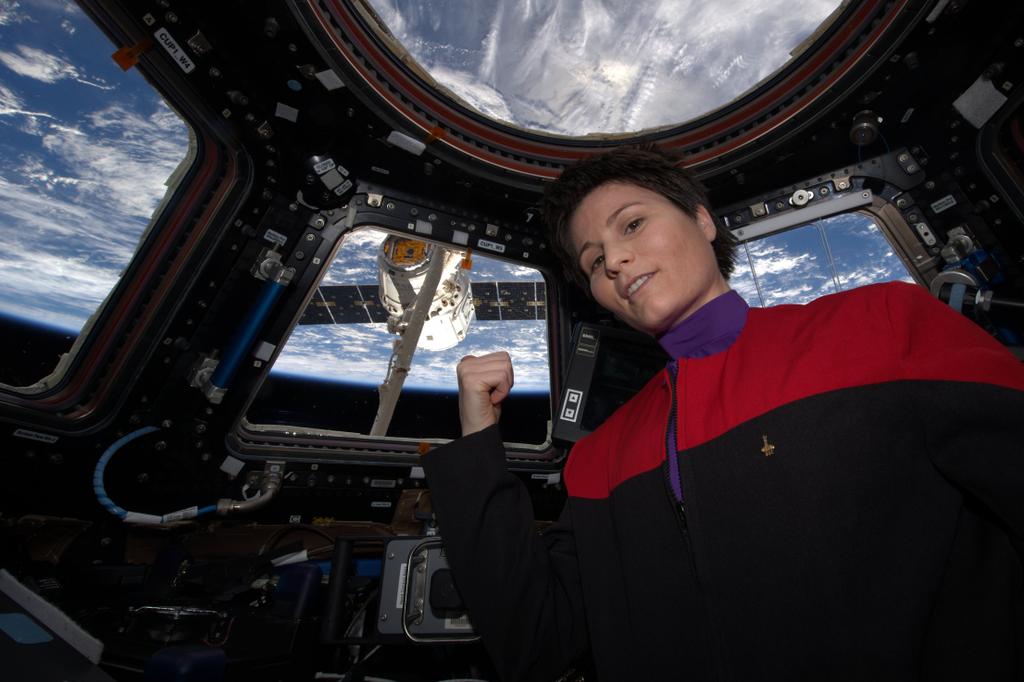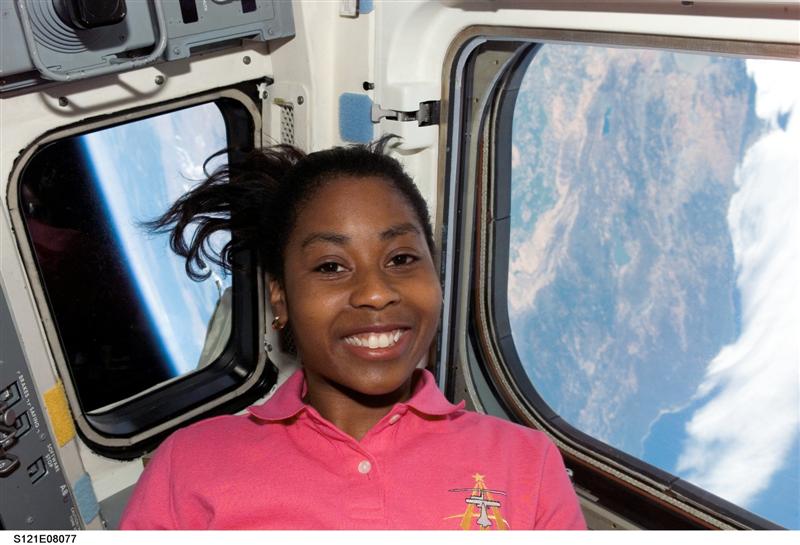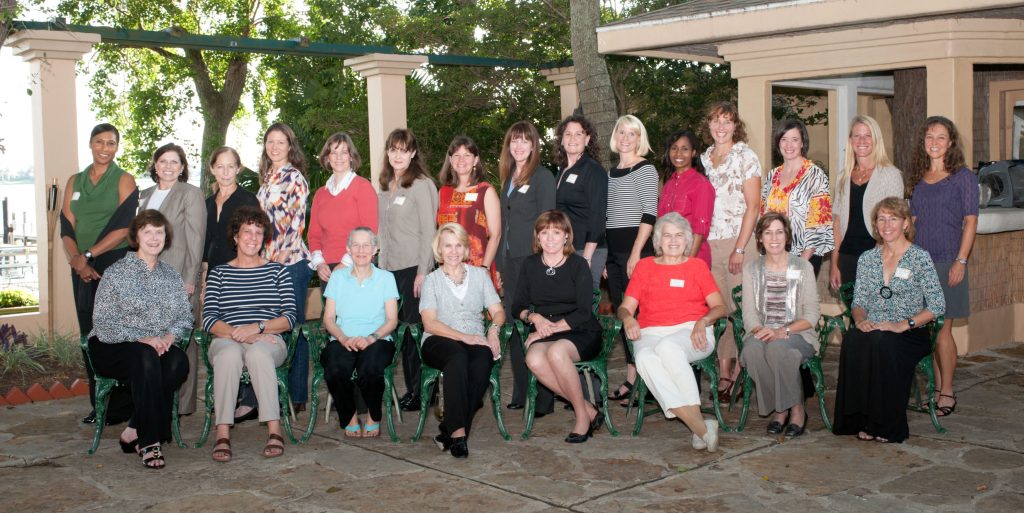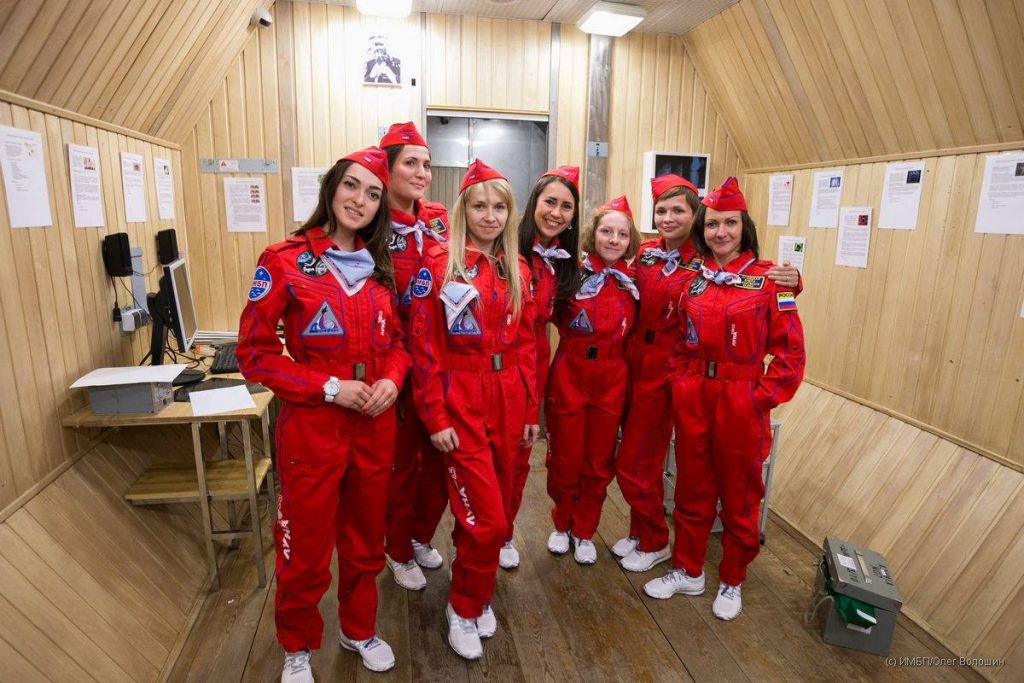Unmanning Space Language
Language matters, as demonstrated by the recent discussion following the discovery of example sentences using sexist stereotypes in the Oxford Dictionary of English. Language about who goes into space also matters, both historically and again now as more people are on the International Space Station for longer-duration missions, and NASA, SpaceX, and others plan to send humans to Mars. When journalists write about a spacecraft, they often use the words manned and unmanned to describe whether there are humans on board. This use reflects the archaic practice of referring to humans as mankind, but does it reflect the reality of humankind and our engagements with outer space?
Alice Gorman, a space archaeologist based at Flinders University in Australia, has written about avoiding sexist or “gender exclusive” language when talking about space. She argues that the use of words like mankind and manned reinforces the idea that space is for men and not for women. Here’s how Gorman explains, on her blog, why this matters:
When you’re a bloke, terms such as “mankind” automatically include you. You don’t have to think about it at all; you’re already in there. Now we all know that these terms are supposed to also include women; but the reality is a bit different. Firstly, women have to “think themselves into” such expressions, even if it happens at a subconscious level. Secondly, there have been studies which show that men tend to assume such expressions to refer to them alone and do not automatically include women unless stated, again often at a subconscious level. And finally, there are plenty of examples of women attempting to exercise a right of “man,” only to be told it does not apply to them.
Gendered language matters because it often reinforces both sexism and the idea of a fixed gender binary (woman/man, female/male). This impacts both how we think about who goes into space and those doing scientific research on space. In her forthcoming book Placing Outer Space: An Earthly Ethnography of Other Worlds, anthropologist Lisa Messeri writes about her research with planetary scientists. “Three of my four chapters, each dealing with a different research project, featured women,” she told me. “Women are quite prevalent in the field of exoplanet astronomy,” Messeri said. “During my fieldwork I had the privilege to work with women who aspire to be the names remembered by future generations.” Messeri worked with one of the leading researchers in the area of exoplanets, MIT astronomer and planetary scientist Sara Seager, who has written about the challenges faced by women in her field.
Research on field experiences has demonstrated that women in STEM (Science, Technology, Engineering, and Math) commonly experience both harassment and sexual assault. Recently publicized cases of harassment in astronomy and anthropology have started to bring this often-ignored truth to the surface, while barely scratching the surface, especially for black women, women of color, and others whose lives are, as MIT theoretical astrophysicist Chanda Prescod-Weinstein writes, “shaped both by racism and sexism.”
The most recent woman in space was Samantha Cristoforetti, a European Space Agency (ESA) astronaut. Cristoforetti went up to the International Space Station on November 23, 2014 and returned to Earth 199 days later to become the record holder for the longest single space flight by a woman. As of early 2016, 59 women from over 10 countries have gone into space.
In 2014, Ariel Waldman co-authored a National Academy of Sciences study on the future of human spaceflight. Waldman, founder of Spacehack.org and adviser for the NASA Innovative Advanced Concepts (NIAC) program, told me that her report did not use manned and unmanned, but instead used crewed and uncrewed. In 2014 she wrote on Twitter: “Memo to journalists who cover human spaceflight: please stop using ‘manned’ and ‘unmanned.’ It’s time. Words like crewed and uncrewed exist.”
Since 2006, NASA’s History Program Office style guide has said “references referring to the space program should be non-gender specific.” In 2010, NASA astronaut Stephanie Wilson described her experience as part of the first mission in which four women astronauts were in space at the same time, noting “much of our training and mission assignments have become gender-neutral, as it should be.” However, many journalists continue to use manned and unmanned and continue to write about landing a “man on Mars,” sending “men into space,” and plans for “manned missions.” Why does this kind of language persist?
Part of the reason gendered language persists is the belief that a dictionary is an authoritative record of language, and from editorial style guides relying on that idea. In 2015, I was involved in a discussion on Twitter with space scientists about this issue. Kenneth Chang, a New York Times reporter, asked for a way to avoid unmanned but noted that since uncrewed is not in the dictionary his editors would simply replace it with the media standard, which is unmanned. Senior Editor and Planetary Evangelist Emily Lakdawalla, of The Planetary Society, points out in a blog post that the Associated Press Stylebook still uses the outdated manned and unmanned but says she isn’t keen on crewed/uncrewed as a replacement, because “when spoken aloud, the unfamiliar ‘crewed’ sounds like the more-familiar ‘crude,’ which is both negative-sounding and confusing. I usually use ‘human’ and ‘robotic.’”
She goes on, however, to note that even a robotically controlled ship could have humans in it. I like crewed and uncrewed, and I think the context makes it clear when you say, for example, “this will be the first crewed spacecraft to visit Mars.” It may be awkward at first, but this is often the case with new words. It wasn’t long ago that few would have known what an iPad was, or a tweet, and before that a blog, and so on.
Gendered space language is also linked to the racialized language of “manifest destiny,” which appears in many discussions of space settlement or “colonization.” As biologist Danielle N. Lee, a 2015 TED Fellow and Scientific American blogger, points out, space language is also involved in reproducing the myth that wealthy white men can “save humanity” by colonizing Mars. Lee asks a question that is central to the anthropology of space: Whose “version of humanity is being targeted for saving?”
The first woman of color to travel into space, physician Dr. Mae Jemison, is now the principal of 100 Year Starship, a project to develop the capability to reach another star within 100 years. The leader of this visionary project is not a white male venture capitalist, but a black woman who has actually been in space. Shouldn’t the language we use to talk about humans in space reflect this reality?
So what makes a word a word? Those who study language know that it is always changing, and this process of language change is an often-discussed phenomenon in socio-cultural linguistics, one of anthropology’s four subfields. The Linguistic Society of America notes that language changes for a few reasons. First, it changes to meet the needs of its speakers, who need to talk about new technologies and experiences (sending a text, for example). Second, language changes because people with different experiences and knowledge exchange new words when they communicate. Third, we borrow words from other languages or create them by shortening or combining other words (gym from gymnasium, brunch from breakfast and lunch). And finally, language changes because word order, spelling, and sounds change over time. The word bird, for example, was originally spelled brid, but at some point the misspelling became the dominant spelling. Were text and gym and brunch real words before they were in the dictionary? Yes.
Dictionaries don’t determine which words are real; instead, they record certain words selected by editors because they are used by specific populations, often dominant or powerful ones, in speech and in print. From an anthropological perspective, a word doesn’t need to be in a dictionary to be a real word. It’s real when it can be used to communicate. If readers saw the word uncrewed in the context of a spacecraft without people in it, there’s a good chance most of them would understand what it means.
When we think about gendered language we have to remember that, as Gorman noted, sexism in space language has real-world impacts. In October 2015, six Russian scientists prepared to simulate the eight-day journey to the moon and back in an experimental habitat here on Earth. The mission, called Moon-2015 (Луна-2015), was a follow-up to a 520-day simulation conducted with an all-male crew that began in 2010. Before entering the simulated space habitat, the scientists held a press conference where reporters asked the crew questions, including “How will you deal with being without makeup for eight days?” and “How will you cope with not being around men?” All six of the scientists in the Moon-2015 simulation were women, and the goal of the study was to see how a crew of only women would work together. These are experts in physiology, psychology, cardiology, ecology, biological physics, and genetics, but because they are women they were asked about makeup and men, not science.
For the first time in history, the most recent NASA class of eight astronauts is 50 percent women. The four women from this class may be among the first humans to go to Mars 15 years from now. “With so much conflict in the world,” says astronaut Anne McClain, “space exploration can be a beacon of hope. No one cares about race or religion or nationality in space travel. We’re all just part of Team Human.”
The word unmanned has a secondary meaning: to deprive of qualities traditionally associated with men. On June 16th, 1963, Russian cosmonaut Valentina Tereshkova became the first woman in space. She orbited the earth 48 times and remains the only woman to conduct a solo space flight, the only truly unmanned spaceflight. So far. It’s long-past time to unman space language so we don’t bring sexist baggage from Earth into space. Human futures in space and on Earth must include everyone. [1] [1] Thank you to Alice Gorman, Danielle N. Lee, Ariel Waldman, Emily Lakdawalla, Melissa J. Hills, Amy Dentata, Chanda Prescod-Weinstein, Janet D. Stemwedel, and Lisa Messeri for their assistance in my research for this post. Any errors are mine.



































